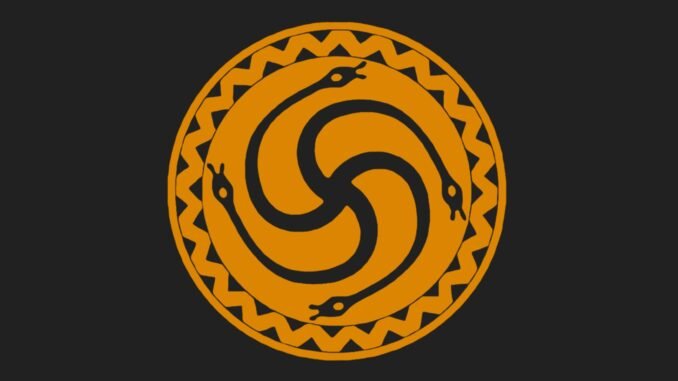
The process of state recognition of the Ancient Baltic Religious Community “Romuva” is still ongoing. Against the backdrop of the turmoil of the war in Ukraine, it is much quieter and sometimes not audible at all. But the injustice done to the community in 2019 by the decision of the European Court of Human Rights (ECtHR) will have to be rectified, and it seems in this session of the Seimas, Mečys Laurinkus writes in lrytas.lt.
If this does not happen, we will have to start all over again with interpretation, education and persuasion.
The road to the recognition of religious communities is always a difficult one. The Romuva Community came into being at a time when state atheism was on the rampage when a part of the Lithuanian intelligentsia turned back to the ancient religious roots of their culture. After more than 20 years of Soviet persecution, Romuva was registered after the restoration of independence in 1992.
On 27 June 2019, the Seimas decided not to grant state recognition to this religious community. The Romuvians complained to the ECHR. The response, perhaps to the surprise of the victims themselves, was swift. In 2021, in the case of the Ancient Baltic Religious Community Romuva v. Lithuania, the ECtHR found that the Seimas had violated the provisions of the Convention for the Protection of Human Rights and Fundamental Freedoms (a strange case name, to be honest – Authors).
Much has been said about this; it is not worth getting confused. One thing is clear: the ECtHR is not interested in the ideology of Romuva, nor should the Seimas or the state be involved in it, provided, of course, that it does not contravene Lithuanian law.
Obviously, the ideas of the Romuvians do not contradict the Constitution. However, the tests imposed by Lithuania as to the time and extent to which believers in new religious communities could actually become such believers raises doubts as to whether they are compatible with the Constitution.
We know how many followers of Jesus Christ there were in the beginning.
There were no academies at that time, other than the scribes, to confirm the historical continuity of the ideas of Christ. Two thousand years later, Nietzsche said only this: there was one Christian, and he nailed him.
Personally, I am in favour of the One nailed to the cross. But I also listen carefully to others and try to understand what they are saying. I am basically a religious liberal.
Not a term I coined, but a good one. When politely asked by the European Court of Human Rights to reconsider ‘recognition’, the Seimas did the honourable thing, without beating its chest, by deciding to open a debate on a complex and delicate subject – faith and its legitimisation at a national level.
Lawyers and scholars of religious diversity have been invited to the rostrum.
What was heard from the rostrum of the Seimas, day and night, was different from the emotions on the same subject, which would mean two years ago. The Seimas Committee on Human Rights and its chairman, T.V. Raskevičius, entitled “Legal and Historical Aspects of the State’s Recognition of Religious Communities”, succeeded, with the help of qualified speakers, in properly assessing and not undermining the intentions of the Romanians, and in revealing the legal problems of recognising new faiths, especially when it concerns the social and spiritual life of society and education.
Although state recognition does not give religious communities the same status and privileges as the state-recognised traditional religious communities and societies in Lithuania, it does give some privileges that may raise questions for different segments of the population to seek a broader explanation of what this means, how to react, and how to make choices in the way they allow children to attend religious classes in schools.
A recognised community could marry, have the right to teach religion and religious observance in schools, and have compulsory time on LRT. Not so little – a much higher level of social expression than mound ceremonies or street marches.
It would also raise questions for history teachers who value Lithuania’s old pre-Christian beliefs, especially since Lithuanian historians are rather reserved. “Pagan beliefs did not reach the level of religion, cult servants did not become the Church”, wrote E. Gudavičius, the most eminent Lithuanian historian of our time.
Since those seeking recognition refer to themselves as the “ancient Baltic religious community”, it is natural to ask to what extent it is historically continuous.
As far as I know, Romuva does not link its religious ideas directly to the Lithuanian folkloric movement of the 1960s or to anyone’s concept of the reconstruction of ancient Baltic religion.
Rather, it is a picture of various historical studies, supplemented by its own views adapted to the present times, as set out in the booklet “Baltic Religion Today” by the community’s inspirer J. Trinkūnas and his followers.
Today, not yesterday, not a thousand or more years ago. “In the heart of every Lithuanian lies the natural religion of the Ancestors,” it says, “The Baltic religion is the natural Lithuanian faith, variously called paganism or ancient Lithuanian religion.
Over the centuries, Lithuanians have preserved their deep religion, as well as their notion of a virtuous and honourable life.
The essence of religion is inseparable from morality. Respect, gratitude and love have been inherent in man at all times. Ancestral religion is the essence of our being.”
Although it is impossible to avoid explaining the concepts nowadays, the intention of the Romans is beautiful and in line with the Neopagan movements that are becoming more and more popular in Europe, and many interesting studies have been written about it. I hope that the Seimas will take this broad context into account when it embarks on a serious debate.


Be the first to comment